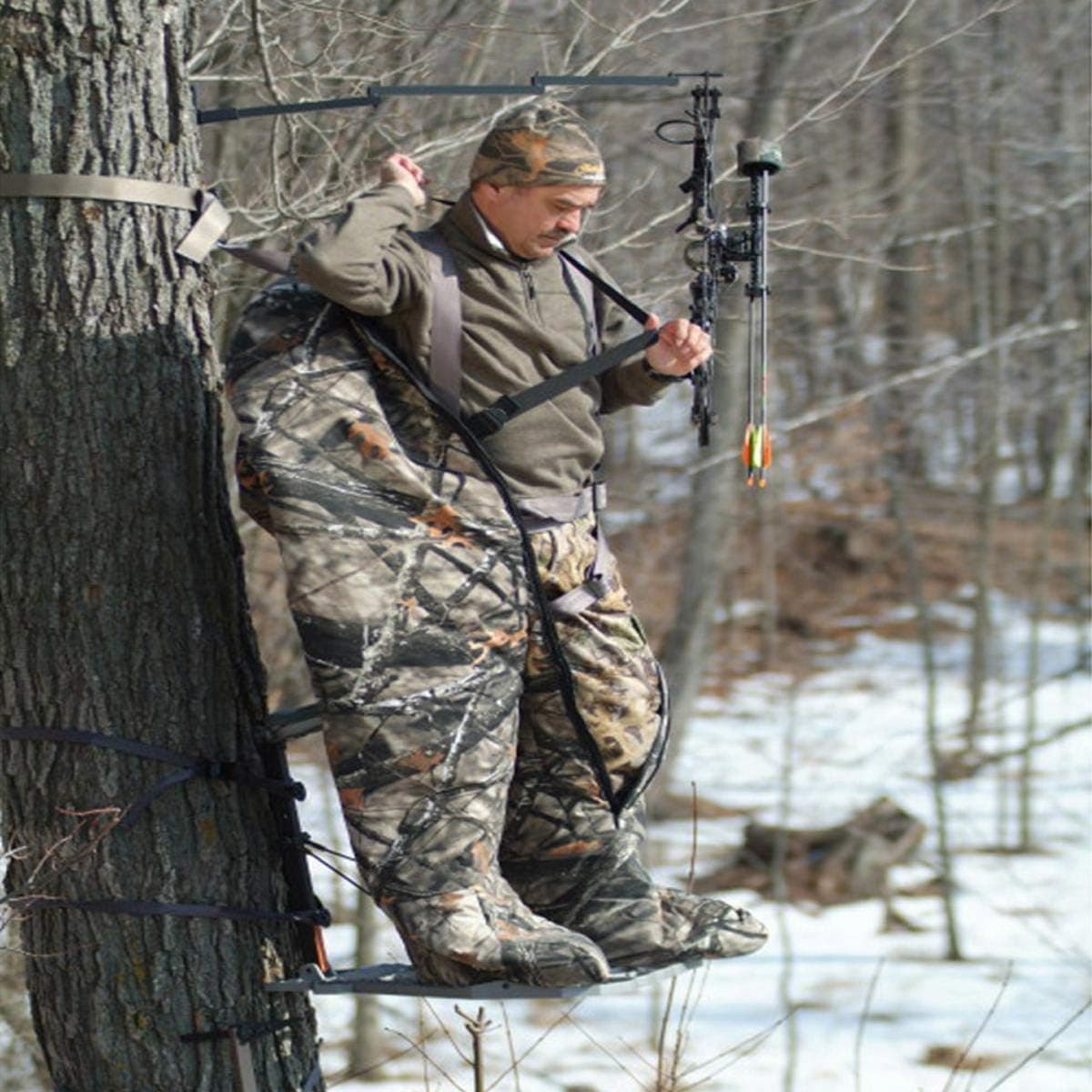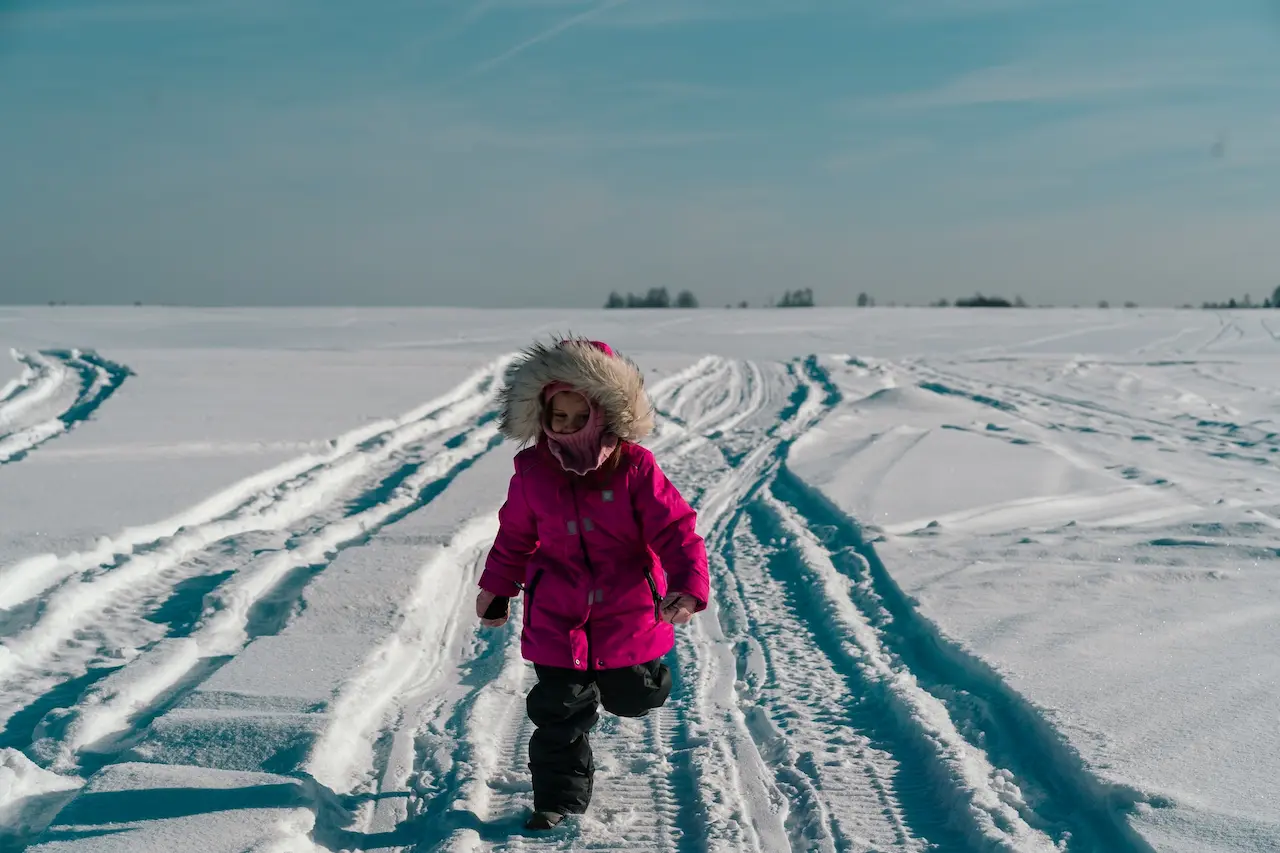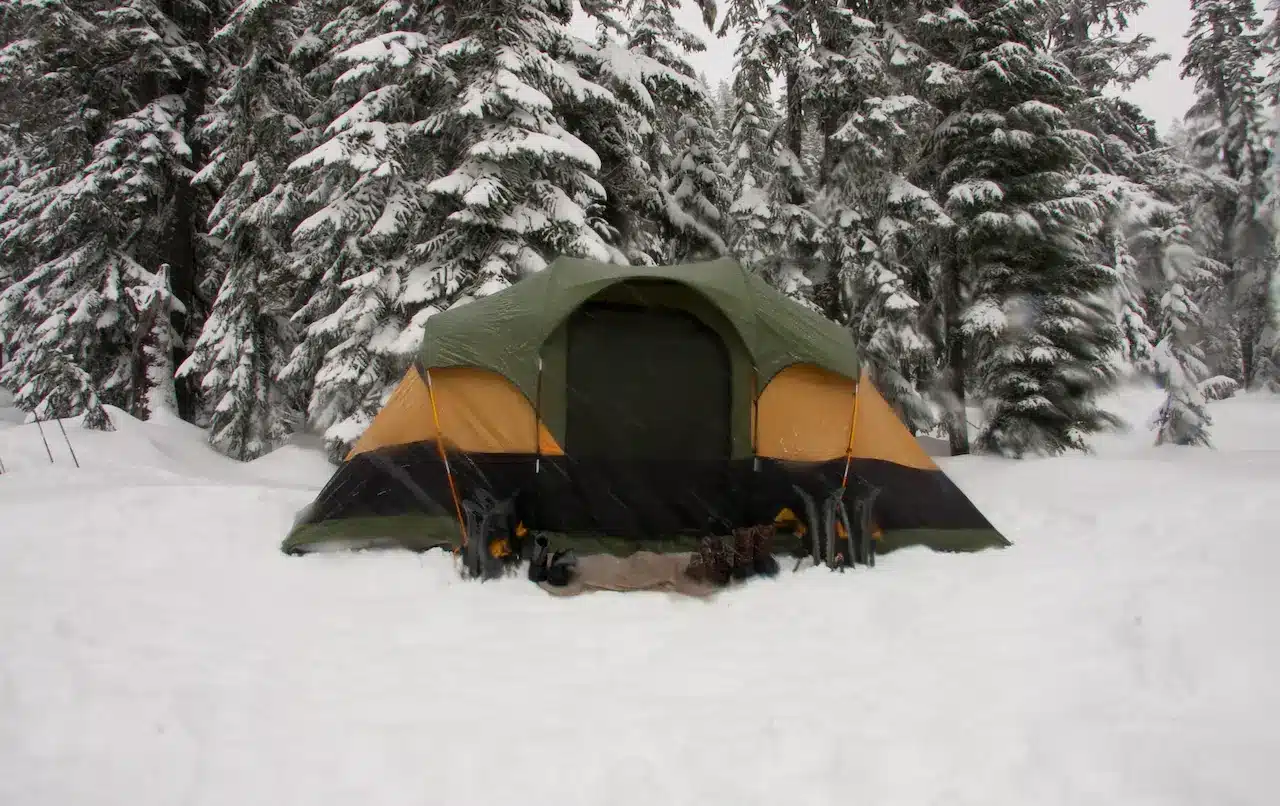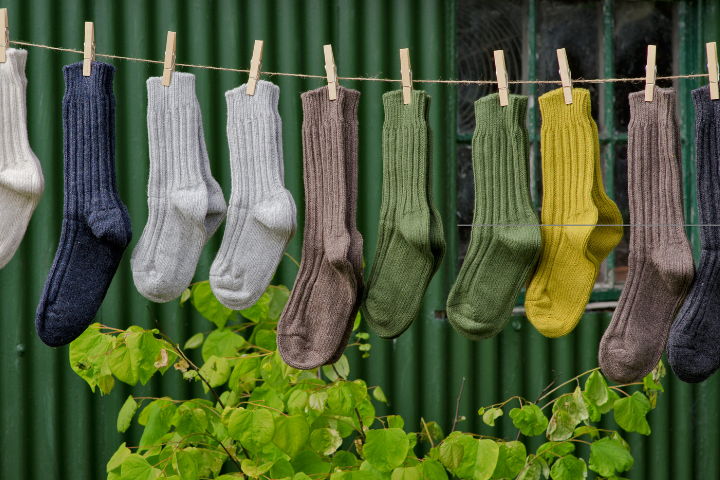The Definitive Guide to Climbing Skins
First, what are ski skins? Ski skins, also called climbing skins, are long pieces of nylon or mohair that attach to the bottom of skis. Once upon a time, they were actually made from seal skin, which is where the name comes from. They are usually used for backcountry skiing and alpine touring to help with climbing uphill. Skiers sometimes call this “skinning up the mountain”.
Skiing uphill seems pretty counter-intuitive at first, but once you learn how to do it, skinning can be really efficient and easy.
Climbing skins work by having tiny little fibers called plush that allow them to glide forward but not backward. Depending on the type of material used and how the material is constructed, climbing skins may offer more glide or more grip.
When to Use Ski Skins
Climbing skins are primarily used for skiing in the backcountry and alpine touring when you need to climb hills. If you are skiing downhill, you’ll want to take your skins off each time.
Short Downhills
During your tour, you will likely encounter some short downhills. You can ski downhill with skins on, but it will require some extra skill. If you encounter a short stretch of downhill, it’s sometimes not worth the hassle of removing your skins each time.
Knowing when to take your skins off really depends on your experience level and the type of hill. With practice, you’ll get better at knowing when to take your skins off or to keep them on.
Pulks and Sleds
If you are pulling a pulk or sled on skis and you expect some uphills, carrying a pair of skins will help a lot. If you are traveling on flatter sections, using grip wax should be fine.
If you are looking to learn more about pulks and sleds, check out our pulk guide where you will learn some packing tips.
You may also like Best Ultralight Down Jackets
Types of Climbing Skins – How to Choose
There are a few different types of climbing skins. One skin you choose will really depend on your needs and what you are looking for. Different skins offer different advantages when it comes to things like grip, glide, weight, durability, and packability.
The 3 different kinds of material are:
- Nylon (synthetic)
- Mohair
- Nylon/Mohair Mix
With all skins, there is going to be a break in period. This is where the plush is new and the stiffest. After a couple of years, the plush and skin fibers start to even out and glide better.
Nylon Skins
Nylon skins are a popular choice for beginners who are first getting started with alpine touring or for extra steep slopes where you want the most grip. These skins perform at their best in warmer and wetter conditions.
Nylon is also more durable than mohair and will last a long time. Like other skins, however, the glue will eventually need to be replaced. Nylon skills also tend to be more affordable than mohair.
There are a few downsides to nylon though. They are the heaviest climbing skin and are bulkier. If you are carrying them in your jacket, they are going to take up a little bit more space. And because they have the most grip, they don’t glide as well as other skins.
Pros
- Superior grip of all climbing skins
- More affordable
- More durable
- Beginner friendly
Cons
- Doesn’t glide as well as mohair
- Bulkier
- Heavier
Who should get nylon skins? If you’re a beginner or doing a lot of climbing, especially on steep sloper or slicker hills, nylon is a great choice.
You may also like Best Hiking Leggings With Pockets
Mohair Skins
Mohair is another type of skin material made from Angora goat hair. This material is a lot lighter than nylon and it glides really easily, making it great for speed or long tours where you want to conserve the most energy. It’s also a lot thinner than nylon so it packs more easily. These skins perform at their best in cold dry temperatures.
There’s a lot of great properties to mohair and 100% mohair climbing skins are often used by racers and expert mountaineers and climbers who want that extra speed.
While mohair sounds great, there are some disadvantages to consider. The biggest drawbacks to using mohair skins are durability and traction. Mohair is less durable than nylon and is going to wear out more quickly and will require extra care. And while they do have superior glide, the drawback is lack of grip. They are more expensive as well.
Pros
- Superior glide for speed and efficiency
- Lightest of all climbing skins
- Most packable
Cons
- More expensive
- Less durable
- Doesn’t grip as well as nylon
Who should get mohair skins? If you are a more advanced skier or looking for more speed and efficiency, mohair climbing skins are going to be your best bet.
Nylon/Mohair Mix Skins
Nylon and mohair mix or blended skins offer a little bit of the best from both worlds. Also called mohair mix, the blend is composed of 70% mohair and 30% nylon or 65% and 35% respectively.
Blended climbing skins offer some nice advantages:
- Lighter than nylon
- Less bulky compared to nylon
- More durable than mohair
- Better glide compared to nylon
- Better grip compared to mohair
Who should get mixed skins? If you are an experienced skier with good technique and looking for something a little more durable and affordable than pure mohair, blended skins are a good choice. It will give you good glide while your experience makes up for the lack of grip offered by nylon.
Polyethylene Plastic Skins
Okay, so we told you there were 3 different types of material for climbing skins, but there’s actually more. Other materials are less common, but we thought they would be worth the mention.
Polyethylene is another material used for climbing skins. Polyethylene is the most popular plastic in the world, and yes, they use it for skins. One company in particular that makes polyethylene skins is Fischer, who has its Profoil skins.
Polyethylene skins have a fish scale design to help grip snow, similar to what you would find in a cross country ski. This type of skin offers a lot of interesting advantages, but also some downsides.
For the advantages, the plastic makes these skins pretty durable. Going over anything like branches or other debris isn’t going to hurt these skins too much.
One huge advantage, in particular, is that because these skins are plastic, they aren’t going to hold any water. No more worrying about wet snow.
As for grip and glide, the grip is fairly decent. Nylon is probably going to offer a better grip though. As for glide, it’s going to be a pretty good choice. You’ll be able to ski short downhills without needing to remove your skins.
There are some downsides to using a skin-like Profoil. They are going to be harder to pack. The plastic is not going to be flexible, taking up a little more room in your jacket or bag. They do come with creases to make them fold a certain way which helps.
And storing them is tricky as well. The glue is so sticky, they require a protective plastic sheet to keep them from sticking together. It’s manageable but makes for a little more hassle when there’s another piece you have to keep track of (and try not to lose in the wind).
You may also like Can You Go Hiking in Sweatpants? When to Wear Them
Climbing Skin Sizing
When it comes to climbing skins, they are pretty much work with most skis. Skins come often come with universal tail clips and tip loops to attach them, so you don’t need any special type of ski.
What size ski skins you’ll need will depend on the size of your skis. There are a couple of things you want to look for when deciding if a pair of skins will work with your skis, that is, the width and length.
Width
Skins usually range from 80mm to 140mm in width, and sometimes wider. If you have fat skis wider than 140mm or 145mm, you might have a harder time finding the right skins that fit.
To calculate the width that you need, you’ll want to find a skin width that is about 5-7mm shorter than the widest part of your ski, which is usually the tip.
Often times the ski dimensions are printed on the ski itself, but if you can’t find it, you can look it up online, contact the manufacturer, or measure it with a tape measure.
If you can’t find the exact width that you need, going with a larger skin is okay. You can always use a trim tool to trim down your skins and cut through the nylon and tacky glue.
Length
When it comes to length, you’ll want to cover as much as the ski as you can. Sizing can be a little bit tricky because different manufacturers use different systems for sizing.
Exact fit
Some manufacturers make skis and also skins that match up with them. In this case, getting the right fit is easier.
Set ranges or sizes
Some companies sell their skins in “ranges” or “sizes”, such as 162“172cm, 171“181cm, 180“190cm, and 189“199cm. With these skins, you’ll want to find the range that your ski length fits into, then use the adjustable tail attachment to get the exact fit that you want.
Trim to fit
Other companies, like Black Diamond, sell skins that can be trimmed down to fit your skis. Once your skin is trimmed, you’ll then need to attach tip and tail clips. Using these skins will require a little bit more work to get fitted, but you can be sure you get the exact length you want.
Kickers
While we are talking about skin sizing, there is a special kind of climbing skin called kickers. Kickers are short climbing skins designed to be especially light and efficient. Instead of covering the entire ski, kickers cover about 1/3 to 1/2 of the ski.
Kicker skins are usually used for tours with a lot of rolling terrain, multi-day tours, or for skimo (ski mountaineering) competitions. If you are doing any steep climbing, you’ll be better off using full-sized skins instead.
Kickers offer some nice advantages:
- Very lightweight and packable
- More glide
- Easier and faster to put on and take off
Who should get kicker skins? Advanced climbers who want to go ultralight, who are on long tours, or who are competing will enjoy the benefits of kicker skins.
Skin Attachments
Attaching skins to your skies is done by the help of two different things, the tail clip and tip loops, and climbing skin glue.
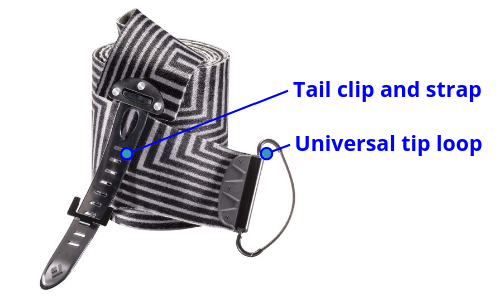
Tail clip and tip loops are pretty universal, meaning you can use different skins on different skis. There are though some skins that only work with certain skis. Dynafit skins are one example. Dynafit skins have a special attachment that attaches into a notch on the ski, but most skins and skis aren’t like this.
If you have especially wide or fat skis, Black Diamonds sells extra-large tip loop cables that measure 135 – 165mm wide.
You may also like Can You Hike in Jeans?
Glue and Silicone Adhesives
Along with the tail and tip attachments, most skins attach to skis with glue. There are some “glueless” skins out there that use a silicone adhesive instead. When you’re choosing between glue and silicone adhesive skins, you’ll want to understand the differences.
Glue
Most skins on the market will have a sticky side made from glue. While they stick really well, they can sometimes be tough to work with when the sides are stuck together for storage or trying to pull off the ski.
Glue requires some extra care and maintenance. Over time glue will lose its stickiness, at which point the skins can be replaced or re-glued.
Glue skins offer some advantages over silicone adhesives:
- Strong tack, more aggressive stick
- Great for all day performance
- Works well in cold temperatures
- More reliable grip
The downsides to using glue are that it requires more effort to get on and off the skis and you have to take care of them properly.
If it gets really cold the glue can freeze and have trouble sticking. G3 is one company that put a lot of effort into making the best glue for skins and has the lowest temperature glue on the market.
Silicone Adhesives
There is some newer technology on the market that uses a glue alternative. These are sometimes called glueless skins. Don’t be fooled though, these glueless skins still use an adhesive to make them stick. Instead of glue, they use a silicone-based adhesive coating.
There have been mixed reviews about glueless skins and models have come and gone. They have never become nearly as popular as glue skins.
They do offer some nice advantages though:
- Can be pulled apart easily
- Consistent adhesion
- Adhesion is not affected by warmth
- Maintenance-free coating
- Store easily without the need for skin savers
- Can be washed in cold water to remove any dirt
One downside is that they don’t do as well in the cold and aren’t good for multiple laps or repeated day use where you need to pull them off and restick them during a single tour.
Taking Care of Your Skins
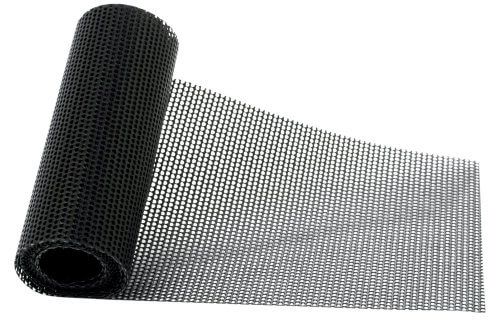
If you want your climbing skins to last longer, you’ll want to make sure you are taking care of them properly. How you store your skins out in the field are going to be different than how you store them when you get back home. Let’s take a look at both these scenarios.
You may also like Hiking Without Underwear, Gross or Practical?
During Touring
When your out doing a tour, there are only two places to store your skins, either in your jacket or in your pack. The reason why some people would keep their skins in their jackets is to help keep the skins from getting too cold.
When you store your skins, you want to make sure there’s no extra glue exposed. So if you’re storing them in your jacket, you want to make sure you are storing them in a place where won’t get little furs all over the glue.
The same thing goes for when you are storing them in your pack. You don’t want any exposed glue rubbing up against anything. If you have a climbing skin storage bag, store them in the bag will help protect them.
The way you want to actually store your skins is by folding them in half so the glue sides touch each other. From there, they can be either folded or rolled up.
Usually, when you are touring, the skins won’t be glued together too long, so you don’t need to worry about using a skin saver.
During Camping
If you are doing any multi-day tours and camping overnight, there are some tricks that will help.
What you don’t want to do is leave your skins on your skis overnight. If you do leave skins on your skis overnight, you risk the glue freezing to your ski. Another thing is you don’t want to leave your skins on your skis in the bright sun. This could have the opposite effect of melting the glue.
When you are drying them out, it’s okay to hang them but make sure the glue isn’t facing the sun. Hanging your skins with the glue facing the ground can be a good idea.
If you have skin savers, definitely use them when camping as you don’t want them freezing overnight. Bring the skins inside your tent when they are dry. If it gets really cold, you can put the skins in your sleeping bag to prevent them from freezing. This will get them warmed up faster in the morning before you peel them.
Long Term Storage
After each session, you want to make sure you dry your skins. Leaving them folded and wet aren’t a good way to store them. When you get back home, you’ll want to hang them up so they can air out and dry. It’s important that you don’t store them in a place that’s too warm which could melt the glue.
Once your skins are dry, it’s really recommended that you use skin savers. Skin savers are plastic sheets that go in between the glue when you are folding your skins to make the glue last longer and make them easier to pull apart.
You may also like Pants or Shorts for Hiking – Which Is Really Best?
Tips for Storage
However you are storing your skins, it’s best to follow these tips:
- Use a skin saver to preserve the glue
- Make sure no glue is exposed when folded
- Keep them in a cool dry spot
- Keep them away from heat that might melt the glue
- Keep them out of the sun
- Don’t leave skins on your skis overnight
One thing you want to keep in mind when using skin savers is a lot of them have rough edges that can be sharp. Skin savers are for long-term storage over the summer. If you put them in your bag, the sharp edges could cut and scrape your gear.
Black Diamond makes some skin savers called “cheat sheets”. Check out the Cheat Sheets on Amazon. These savers are 150mm x 205cm, long enough to cover pretty much all skis.
Waterproofing Your Skins
There are a couple of ways to waterproof your skins to make them grip and glide better when you’re out in the snow. Waxing your skins or using a waterproof solution are two ways you can help boost the performance of your skins.
Wax
When you’re out in the snow, it’s not uncommon for snow to build up on your skins. This will affect your grip, make it harder to glide, and add extra weight.
What can help prevent snow and ice buildup on your skins is wax. Waxing is fairly simple and there are even field kits so you can use when needed. This wax isn’t required or permanent, but it can help.
G3 sells a ski skin wax kit that comes with a scraper and pouch to make it easy to carry in your pack and scrape snow off. Check out the G3 Skin Wax Kit on Amazon.
You may also like What to Wear While Camping With Your Boyfriend
Waterproof Solution
Besides wax, there are other ways to waterproof your climbing skins. One way is by applying a waterproof renew spray. Waterproofing will help keep your skins dry and prevent them from freezing.
Waterproofing your skins are pretty simple. All you need is the spray and a clean soft brush or non-absorbent cloth. Once you spray your skins so that the entire skin is covered, gently work the liquid into the skin with your brush or cloth and wait overnight for the water to evaporate, leaving behind the waterproof solution.
If you’re looking to waterproof your skins, check out Nikwax Ski Skin Proof on Amazon. It even comes with a sponge-on applicator.
